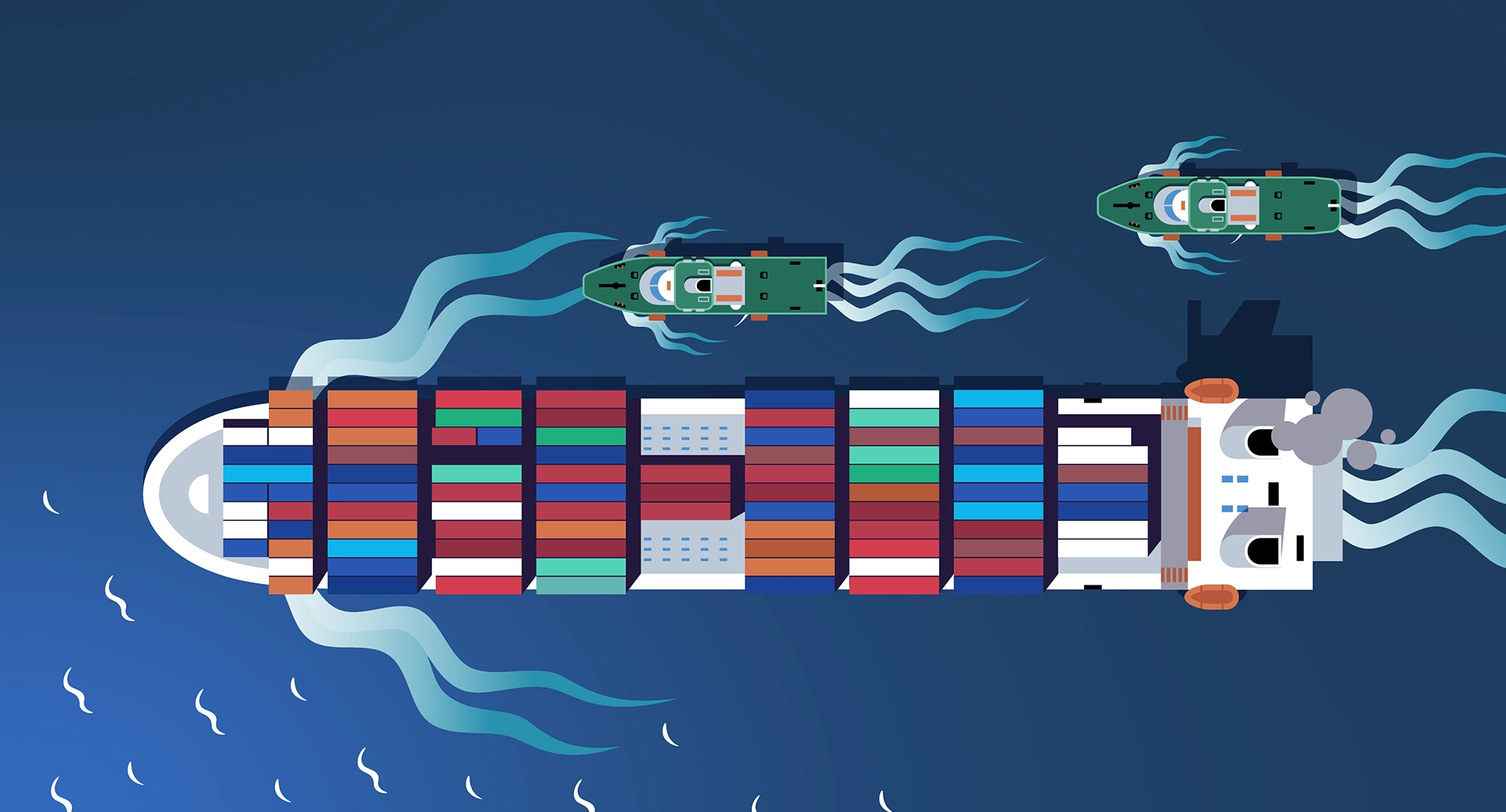Industry Review
Zero-Emission Vessels (ZEVs): The Future of Carbon-Free Shipping

As global industries strive to reduce their carbon footprint, the maritime sector is undergoing a significant transformation. Zero-Emission Vessels (ZEVs) are emerging as a key solution to the environmental challenges posed by traditional shipping, which relies heavily on fossil fuels. With increasing regulatory pressure, technological advancements, and industry commitments to decarbonization, ZEVs represent the future of sustainable maritime transportation.
This article explores the concept of Zero-Emission Vessels, the technologies enabling their development, regulatory frameworks, challenges, and the potential impact on the global shipping industry.
1. The Need for Zero-Emission Vessels (ZEVs)
Shipping is a crucial component of global trade, carrying over 80% of the world’s goods. However, the industry is also a significant contributor to greenhouse gas (GHG) emissions, accounting for nearly 3% of global CO₂ emissions.
Why is Decarbonization in Shipping Important?
✔ Reducing Environmental Impact – Traditional ships burn fossil fuels like heavy fuel oil (HFO) and marine diesel oil (MDO), releasing CO₂, sulfur oxides (SOₓ), and nitrogen oxides (NOₓ), contributing to climate change and air pollution.
✔ Regulatory Compliance – The International Maritime Organization (IMO) has set ambitious targets to cut GHG emissions by 50% by 2050 (compared to 2008 levels) and achieve full decarbonization by the end of the century.
✔ Market and Consumer Demand – Customers and investors are demanding greener supply chains, pushing shipping companies to adopt sustainable practices.
Zero-Emission Vessels (ZEVs) offer a viable path to achieving these environmental goals by eliminating carbon emissions and using alternative, cleaner energy sources.
2. Technologies Powering Zero-Emission Vessels
To achieve carbon-free shipping, Zero-Emission Vessels rely on innovative energy solutions. The key technologies driving ZEV development include:
2.1 Hydrogen Fuel Cells
- Hydrogen fuel cells generate electricity by combining hydrogen and oxygen, producing only water and heat as byproducts.
- Advantages: Zero carbon emissions, high efficiency, and scalable for different vessel sizes.
- Challenges: High production costs, storage difficulties (requires cryogenic tanks or compression), and limited refueling infrastructure.
2.2 Ammonia-Powered Ships
- Ammonia (NH₃) is a carbon-free fuel that can be used in modified marine engines or fuel cells.
- Advantages: High energy density, abundant global supply, and compatibility with existing bunkering infrastructure.
- Challenges: Toxicity and handling risks, along with the need for green ammonia production (generated from renewable energy sources).
2.3 Battery-Electric Ships
- Battery-powered vessels store and use electricity to power propulsion systems, similar to electric vehicles (EVs).
- Advantages: Zero emissions, silent operation, and energy efficiency.
- Challenges: Limited range, high battery weight, and charging infrastructure limitations. Suitable for short-sea shipping and ferries.
2.4 Wind-Assisted Propulsion
- Technologies like rotor sails, wind kites, and rigid sails use wind power to reduce fuel consumption.
- Advantages: Renewable, free energy source, and can be combined with other propulsion methods.
- Challenges: Weather dependence and retrofitting costs for existing vessels.
2.5 Nuclear-Powered Ships
- Some experts propose small modular reactors (SMRs) as a nuclear propulsion option for cargo ships.
- Advantages: High energy density, long endurance, and zero emissions.
- Challenges: Regulatory concerns, public acceptance, and nuclear waste disposal.
A combination of these technologies will likely be used to develop efficient, scalable Zero-Emission Vessels.
3. Regulatory Frameworks Driving ZEV Adoption
Governments and international organizations are implementing stricter regulations to decarbonize shipping. Key regulations include:
3.1 IMO’s Decarbonization Strategy
- The IMO aims for a 40% reduction in CO₂ emissions per transport work by 2030 and zero emissions by 2050.
- The Energy Efficiency Design Index (EEDI) and Carbon Intensity Indicator (CII) push shipowners toward cleaner technologies.
3.2 European Union’s Fit for 55 Package
- The EU’s Emissions Trading System (ETS) will include shipping, requiring operators to pay for carbon emissions.
- The FuelEU Maritime Initiative promotes the use of sustainable fuels.
3.3 National and Port-Level Incentives
- Countries like Norway, Japan, and South Korea are funding ZEV research and development.
- Eco-friendly ports offer lower fees and priority berthing for low-emission ships.
As regulations tighten, shipping companies must transition to ZEVs to remain compliant and competitive.
4. Challenges in the Adoption of Zero-Emission Vessels
Despite promising advancements, several challenges remain before ZEVs can become mainstream:
❌ High Development Costs – Investing in new fuel technologies and ship designs requires substantial funding.
❌ Infrastructure Gaps – Ports lack facilities for hydrogen, ammonia, and battery-electric bunkering.
❌ Energy Supply Chain Issues – The availability of green hydrogen and ammonia remains limited.
❌ Slow Fleet Transition – Most ships have a lifespan of 25-30 years, delaying full industry transformation.
To overcome these challenges, governments, shipbuilders, and energy providers must work together to accelerate technological innovation and infrastructure development.
5. The Future of Carbon-Free Shipping
The transition to Zero-Emission Vessels is not just an environmental necessity but also a competitive advantage. Several pilot projects and industry initiatives are paving the way for cleaner shipping:
🔹 Maersk’s Methanol-Powered Vessels – Maersk has ordered carbon-neutral methanol ships to reduce emissions.
🔹 Yara’s Hydrogen-Powered Ship – The Yara Birkeland is the world’s first autonomous, battery-electric cargo ship.
🔹 Wind-Assisted Cargo Ships – Companies like Cargill and Wallenius Marine are investing in wind-powered freighters.
By 2050, it is expected that a majority of new vessels will be zero-emission, driven by regulatory mandates, technological advances, and economic incentives.
Conclusion
Zero-Emission Vessels (ZEVs) are the future of sustainable maritime transportation, addressing climate change and regulatory requirements. With innovations in hydrogen fuel cells, ammonia propulsion, battery-electric systems, and wind-assisted technologies, shipping is moving toward a carbon-free future.
While challenges such as high costs, infrastructure limitations, and slow fleet renewal remain, continued investment and regulatory support will accelerate the transition.
As the world shifts towards green shipping solutions, Zero-Emission Vessels will play a pivotal role in making global trade environmentally sustainable, economically viable, and technologically advanced. The time for carbon-free shipping is now!